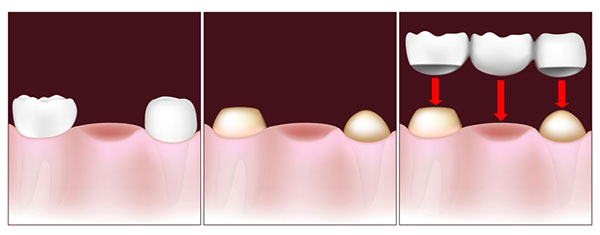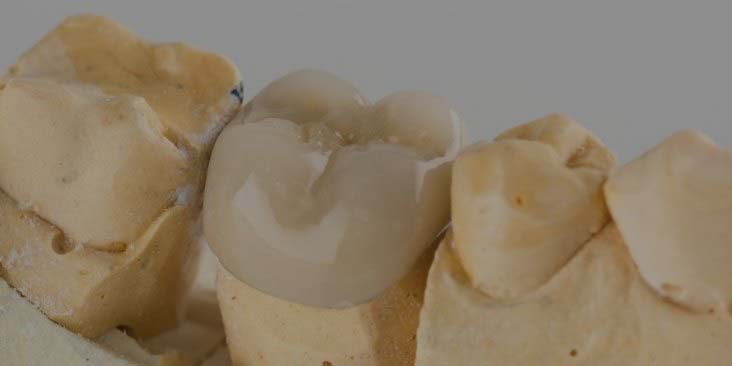Dental Bridges
 Missing teeth not only make talking and chewing more difficult, but they can also cause other problems over time. Teeth adjacent to the space in your mouth can eventually shift into the empty space, which can affect your bite and lead to gum disease or other disorders such as TMJ (temporomandibular joint issues).
Missing teeth not only make talking and chewing more difficult, but they can also cause other problems over time. Teeth adjacent to the space in your mouth can eventually shift into the empty space, which can affect your bite and lead to gum disease or other disorders such as TMJ (temporomandibular joint issues).
One way to take care of a gap caused by a missing tooth is with a dental bridge. There are two types of bridges: removable and permanent.
- Removable dental bridges are also called partial dentures and can be taken out and cleaned
- Permanent dental bridges are sometimes called dentures and are the more long-term option
Your Dental Associates dentist will recommend the best bridge to keep your mouth at its healthiest and you at your happiest. With proper care and dental hygiene, your bridge will keep you smiling for many years to come.
Benefits of Dental Bridges
A dental bridge connects the gap where one or more teeth used to be. Dental bridges are cemented to the teeth adjacent to the empty space, and the adjacent teeth serve as the anchors for the bridge. The adjacent teeth are trimmed down and capped with a crown, and then your dentist will attach a replacement tooth to those crowns to form the bridge.

Dental bridges help you to do the following:
- Restore the ability to chew and speak properly
- Maintain the shape of your face, preventing lip or face collapse
- Distribute the forces in your bite to alleviate stress on other teeth
- Prevent remaining teeth from shifting out of position and into the gap
Each dental bridge is made differently and customized to best complement your individual case. Your Dental Associates dentist will work with you to recommend the best type of dental bridge based on your circumstance.
Types of Dental Bridges
Traditional dental bridges are the most common type of dental bridge. They create a crown on either side of the missing tooth and the replacement tooth sits in between. Traditional bridges are made of either porcelain fused to metal or ceramic.
Cantilever dental bridges are used when the replacement tooth can only be supported from one side. It’s typically used when the space is small and the stresses will be minimal.
Maryland bonded dental bridges are most commonly used to bridge front teeth together. This type uses metal or resin “wings” on each side of the bridge that are bonded to the existing teeth. A Maryland bonded bridge is also called a resin-bonded bridge. A large advantage of this technique is that it requires very little shaping of the anchor teeth.
Implant-supported dental bridges are recommended if you are missing more than one tooth. This technique involves the placement of two or more dental implants with space between them. These implants serve as the anchors for the permanently cemented bridgework. Dental implants simulate tooth roots and maintain the integrity of the jawbone and provide a solid support for the bridge.
Dental bridges are made from several different types of materials including gold, alloy, porcelain or a combination of them. Your Dental Associates dentist will work with you to decide what material will be most beneficial for your specific case.
Request a Consultation
We are happy to improve your smile with a dental bridge. To request an examination with a dentist, click the button below.


